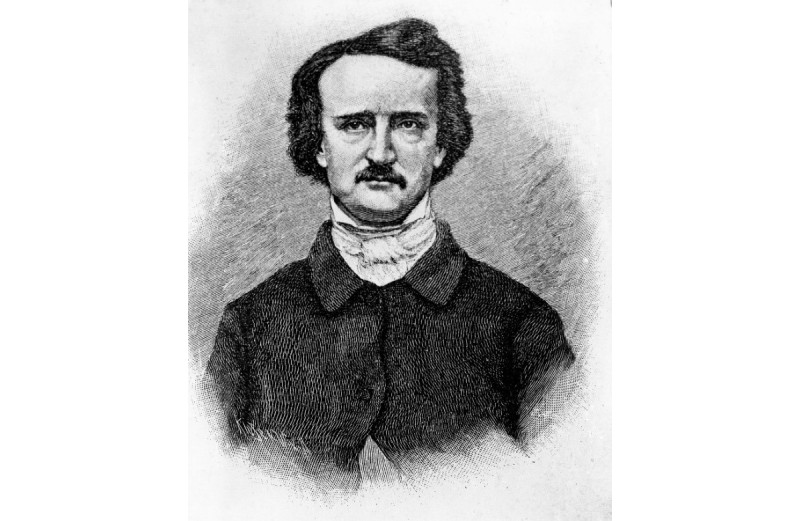The Extraordinary Life of Edgar Allen Poe

At the genesis of some of the most renowned genres in fiction that we have come to know and love, horror, noir, and of course, science fiction, is a man who has an extraordinary a life as the stories he tells in his literature. A man who has brought you the likes of The Black Cat, The Tell-Tale Heart, and, of course, The Gold-Bug.
Let’s look into the extraordinary life of author, editor, and poet Mr. Edgar Allen Poe.
Origins
Mr. Poe’s story began in 1809 in a family of theatre actors in Boston, Massachusetts. Just as he was born, he experienced his first tragedy with his mother’s passing, followed by his father’s passing when he was only 2.
A couple from Richmond, John and Francis Allen, chose to take Edgar under their wing. John was a merchant and everything his biological father was not. He provided Edgar with the best education and a lavish life. Edgar enrolled at the University of Virginia, where he got addicted to gambling. Ultimately, he lost all of his money, and his father refused to help him. Due to his defunding, Edgar was sent back to Richmond, where he met yet, another tragedy. Just like every intriguing story, there is a matter of love. Edgar had his fair share when he fell for Sarah Elmira Royster, who got engaged to someone else; this was Edgar’s first heartbreak
Poe then indulged himself in writing. Poe loved the British poet Lord Byron, and he started taking his work seriously, figuring out a way to monetize his art. When Poe turned 18, he came out with his first piece, Tamerlane and Other Poems. This book didn’t make Edgar money. The records state that only 15 copies of Tamerlane and Other Poems exist, of which 12 are left today. Where many historians doubted the existence of this book, they found a copy in the British Museum in 1876. It is revered as one of the most valuable copies of literature today. In 2009 alone, this book was sold at an auction for 662,000 dollars!
What’s so ironic is that Poe never got a penny from the collections. He had fallen into debt and struggled with a negative lifestyle, yet he continued his work with diligence.
Duty Calls
However, Poe’s writing endeavors ended abruptly as he had to take a detour in the army. After that, Poe traveled to New York, where he worked as a critic for the local magazine. Despite penning harsh criticisms for other writers, Poe didn’t stop polishing his own craft.
In 1845, the world saw Poe’s most famous work, The Raven. The poem was about unrequited love and a man’s conversation with a Raven on a grim evening. This was Edgar’s big break.
The poem was published in almost all newspapers in the country. People quoted Edgar Allen Poe on the streets. He was invited to clubs by high-profile people in New York. Poe became famous not just in America but all over the world; however, still, he was rather poor. He received about 9 to 15 dollars for The Raven and a fee of 115 dollars for public editions. However, Edgar was one of the first American authors to live off his collections from writing alone.
Keep Moving Forward
Even though 15 dollars wasn’t much, it allowed Edgar to move forward with his writing career. Due to his gambling debts, he didn’t earn much with his poetry and had to give most of his earnings away.
In 1846, well, the troubles continued. The magazine he was working for went bankrupt. His primary source of income was through lecturing. He dazzled his peers with his bright, bustling performances. Unfortunately, this gig quickly saturated, as did the collections from each lecture. Edgar, alongside his mother, moved to the Bronx, where his wife, Virginia Poe, sadly passed at 24.
They say it was at this point that Edgar’s spirit broke, and he never managed to recover from this loss emotionally. With his heavy heart engulfed with loneliness, Edgar sought to fill the void inside, which is probably why he was seen in many taverns and barns.
The Macabre Ending
On September 27, 1849, Poe boarded a steamer heading for Philadelphia. Poe had found a venture to edit a collection of poems by an American poetess. What happened after those six days is still a mystery.
But on October 3, Poe’s acquaintance, Dr. Joseph Snodgrass, received a letter from a Baltimore local newspaper journalist, Joseph Walker. The reporter broke the news that he had found a man in dirty clothes in the gutter.
It was none other than Edgar Allen Poe.
Dr. Snodgrass was taken aback by the news, for he believed that Edgar would’ve been in Philadelphia editing poems. Snodgrass immediately left to find Poe and found him in the tavern where he had been brought. He found him mumbling, his eyes empty, muttering something unintelligible and bizarre, wearing someone else’s clothes. The doctor rushed Poe to the hospital. Poe would still remain in his trance in the ER, and on October 7, 1849, Poe passed away, leaving more questions than answers.
Doctor Moran J. Moran couldn’t diagnose what had happened to Poe, and it remains one of the most bizarre passings in American history.
Author Pavel Cerny depicts Edgar Allen Poe’s trip to the hospital in Delirium Tremens amid 14 bottles of whiskey, each for every time he voted in the 1849 elections. The story condenses into a mystery readers get to solve that embodies Poe’s macabre aesthetic. Did Poe die of alcohol poisoning, or was there something much more sinister at play?
Find out by grabbing The Golden Watch.